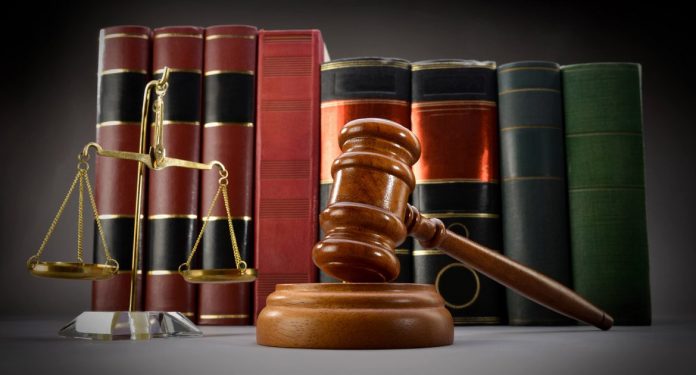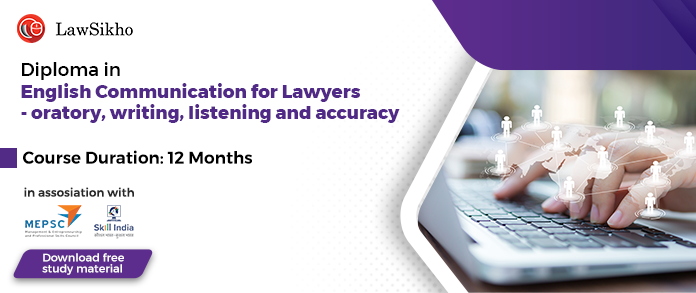This article is written by Harshit Sharma, pursuing the 6-Month Growth Camp: Preparation for LLM Abroad from LawSikho. The article has been edited by Zigishu Singh (Associate, LawSikho) and Ruchika Mohapatra (Associate, LawSikho)
Table of Contents
Introduction
Human right(s) are those basic and specific privileges that each member of the Homosapien species enjoys by the sheer virtue of being a human. Some of them are the right to life, the right against torture, the right to freedom of expression, etc. They are universal in nature and apply to every individual equally without any exception. Whether such rights are accessible or not is a different point but such rights cannot be denied to exist. Human rights do not discriminate between any two persons based on their nationality, religion, language, or gender. However, each of the categories mentioned before has its unique challenges in pursuance of basic human rights. How they interpret and include basic human rights differs for every group. Women, particularly, face more instances of domestic abuse as compared to their male counterparts. This article will examine how basic human rights are perceived by women, what are the different meanings that get assigned to them, how denial of such rights amounts to various forms of violence and how present conditions should be tackled to achieve gender justice.
Development of the concept of human rights
The history of human rights is as old as the human race itself. Multiple literary works record in one or the other form of basic human rights being adhered to. The most concrete of works from the western world is the Magna Carta (a charter of rights granted by the King John of England in 1215 AD), which talks about expeditious disposal of justice, ‘Rule of Law’ and protection from wrongful imprisonment and incarceration. During the medieval period in India, Emperor Akbar initiated many reforms that promoted religious harmony and tolerance. The most fundamental reform for the abolition of Jizya(religious tax imposed on non-Muslim subjects) furthered the idea of equality between all his subjects. In contemporary times, international institutions such as the United Nations have contributed a great deal to the holistic development of Human Rights, the most prominent development being the Universal Declaration of Human Rights (UDHR) in 1948. The declaration, containing 30 Articles, is the first international instrument that consolidated human rights having a cross-border application. The rights provided under the UDHR cover not only the physical and personal rights of an individual but also provide for society’s right at large and roles and responsibilities of the nation-state towards the meaningful realisation of such rights.
Human rights and women
As stated earlier, human rights are universal in nature and apply to all individuals despite their gender, religion, language, etc., and therefore, it is important to examine how women perceive a particular human right and what all it encompasses. Right to life covers within its ambit the right to live a dignified life, what it means and includes for one gender might be different for another. For example, the right to life for a man might include the right to be employed, right to basic wage whereas for a woman right to life covers the right to equal pay, the right to maternity leave, and the right to menstruation leave. For transgenders, the right to legal recognition may come under the Right to life.
Human rights and violence against women
The right to life is the primary, single most important human right which is recognised by all the countries throughout the world. Right to life expands into a range of rights that provide for a positive duty on part of the state to make sure that the conditions in the society are such that an individual can realize their full potential and live a dignified life. It also imposes a duty on the state to check that there is no violation of such right in their jurisdiction and in case it does, the perpetrators are brought to justice.
Despite most of the countries being signatories of UDHR, women continue to face violence and atrocities against themselves in every part of the world. The instances and nature of violence against women are manifold and stem from the patriarchal construct upon which most of the advanced societies are based. The nature of violence doesn’t limit itself to physical abuse but also mental harassment, female infanticide, sexual abuse, human trafficking, and so on. Every survey ever conducted shows that women face much more violence compared to men. Further studies indicate that the women also go through structural violence, which hinders women from growing in their respective generation and the pattern keeps on repeating itself throughout the structure. Throughout the 19th and 20th centuries, women have been vocal about demanding equal rights and ending the violence against them. The three waves of feminism were instrumental in bringing about a radical change with the grant of women’s suffrage rights and tackling persistent inequalities in society at large. Specific legislations have also been enacted to give more representation in the political domain, however, there’s a lot that needs to be done. A woman from an urban or higher class in the society might face fewer challenges than a woman belonging to a rural household. Further race, religion, colour, and language make it different for every woman, for some, it’s better, for others worse. So what can we do to make it better for women all around the globe? First is access to education from a young age, we need to make young women aware of their rights and also empower them to not fall in line with harmful traditions which limit women from intellectual growth. Second is a constant check on the instances of violence against women and handling them strictly and expeditiously so as to convey a message to society at large that violence against women would not be tolerated and dealt with stringently.
Women and gender justice
‘Women’, ‘Gender’ and ‘Justice’ are concepts upon which a straight and objective meaning cannot be assigned. Gender refers to a socially constructed image assigned to a male or female. The male becomes men and the female becomes female. Justice itself is a highly contested term. Does it mean that it is absolute? Does it mean punishing the wrong-doer? Or does it mean taking care of the victim? However, when we combine gender with justice and discuss these concepts with respect to women, it simply means bridging the gap between men and women in all the aspects of life, having equal pay for equal work, equal treatment before laws, equality of opportunity, and treating both the genders equally and with equity.
Women and gender minorities are frequently targets of human rights violations during situations of war because of their gender and the roles they are expected to play in many communities. They may be subjected to physical and sexual abuse, as well as other crimes such as trafficking, displacement, or socioeconomic discrimination.
As per a recent survey by the International Labor Organization, women involved in labour work receive half of the wage than what men receive for working in the same industry for the same hours for similar kinds of work. One may wonder why there is a gap between the genders? Is it because of patriarchy that traditionally limits women to household chores? Is it because of the capitalist mindset of society to exploit cheap labour? It may be a combination of all these things but the main thing is how do we ensure gender justice? Is it even possible to reach a stage where one can claim that gender justice is reached now? It may seem utopian now but one must endeavour to close the gap between the gender disparities. One can start by neutralising the apprehensions assigned to particular tasks right from the home. Cleaning dishes, doing household chores shouldn’t be portrayed to be in an exclusive domain of a particular gender. When young children believe that they can do anything that they like without being subject to society’s rhetoric they will gain confidence to explore all the opportunities which seem far-fetched right now.
Conclusion
Human rights in the context of women’s issues focus on eliminating violence against women and ensuring gender justice between men and women. History has seen powerful movements from all around the globe wherein women have come together to demand what is rightfully theirs. Women should not face any violence especially because of the fact that they are humans first. When society attaches something more as to why women should be protected from discrimination, it dissolves the human aspect of their existence. Reasons like – women should not face violence because they need to study, women should be saved otherwise who will become mothers convey a message that there should be an additional aspect as to why violence against them needs to be stopped and not only the fact that they are human.
Violence against women is inversely proportionate to gender justice. More violence would result in less gender justice. It is only by reducing the violence against women can we, as a society, move towards attaining better figures of gender justice.
References
- https://www.ilo.org/global/about-the-ilo/newsroom/news/WCMS_008091/lang–en/index.htm
- https://www.oxfam.org/en/what-we-do/issues/gender-justice-and-womens-rights
- https://www.un.org/sustainabledevelopment/gender-equality/
- https://www.ohchr.org/EN/Issues/FreedomOpinion/Pages/Report-Gender-Justice.aspx
Students of Lawsikho courses regularly produce writing assignments and work on practical exercises as a part of their coursework and develop themselves in real-life practical skills.
LawSikho has created a telegram group for exchanging legal knowledge, referrals, and various opportunities. You can click on this link and join:
https://t.me/joinchat/J_0YrBa4IBSHdpuTfQO_sA
Follow us on Instagram and subscribe to our YouTube channel for more amazing legal content.
 Serato DJ Crack 2025Serato DJ PRO Crack
Serato DJ Crack 2025Serato DJ PRO Crack











 Allow notifications
Allow notifications



